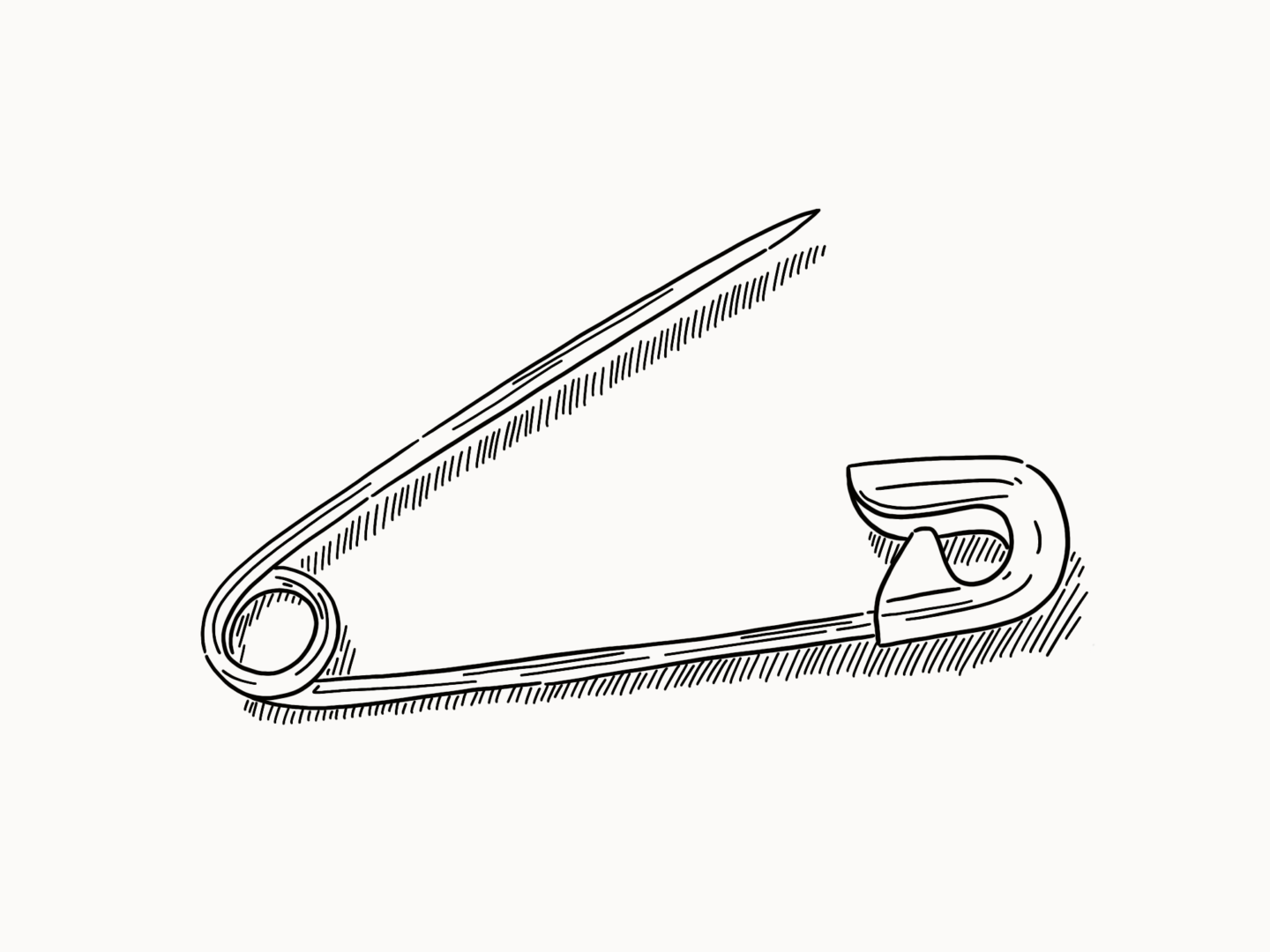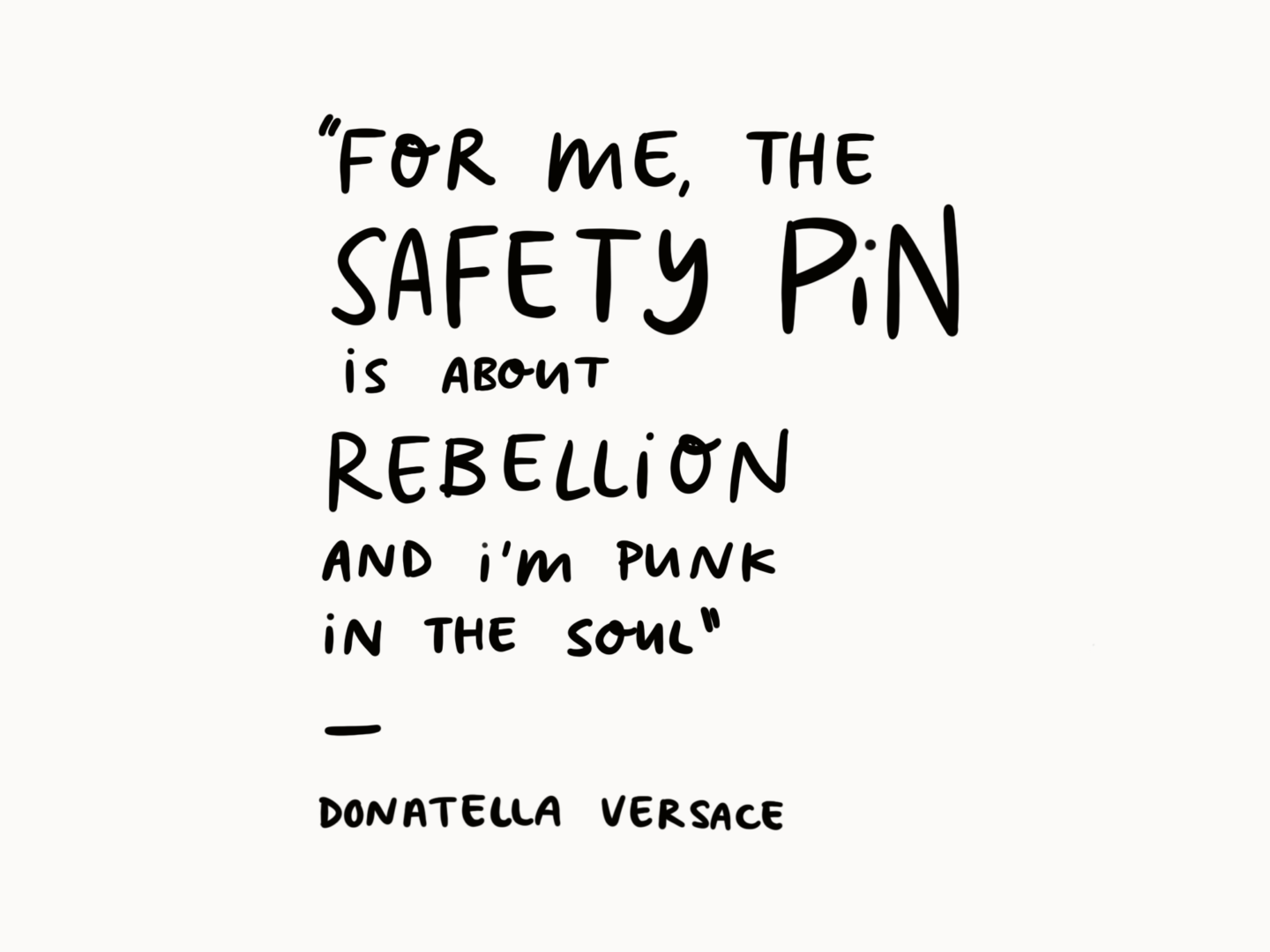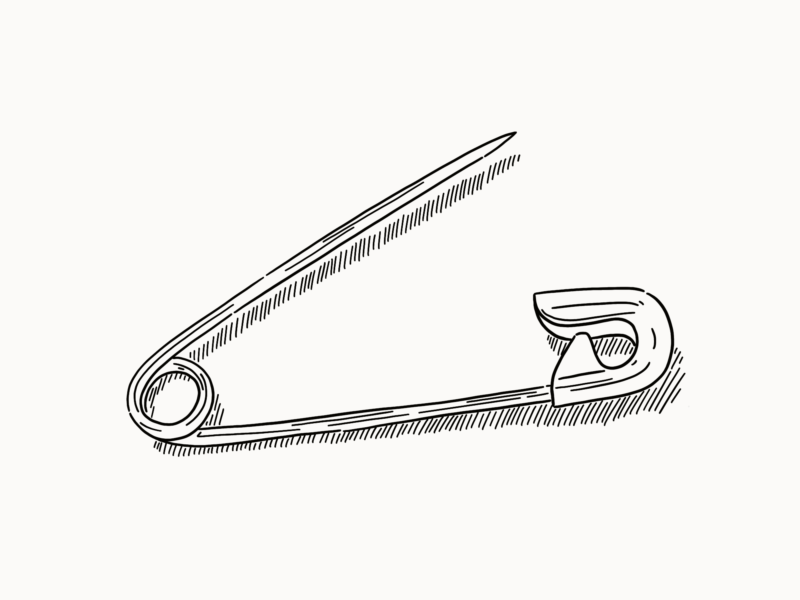When I was looking for inspiration for another design story, I tipped out the contents of the font pocket of my bag, where many treasures can be found. One of the many things that poured out was my emergency safety pin, and I realised I had no idea how something I’ve turned to in moments of clothing strife and was so common in my childhood as the daughter of a frequent fun-runner came to be.
People have been using pins to hold their clothes in place for centuries. In Homer’s Odyssey there’s a wonderful description of Odysseus wearing a pin which holds great symbolic value within the text:
“Odysseus wore a woolen purple cloak,
a two-fold one, and in it was a pin of gold,
with double grooves, and on the front was a marvelous design” (Odyssey 19.225–227)
These pins had great significance as both a marker of social status and spiritual connection. While changes in fashion may have made the pin less useful in the mediterranean as the years moved on, by the time ancient Rome was flourishing so was the humble clothing pin. These pins were known as fibulae and came in a number of pieces: the body, the pin, the spring and the hinge. The body of the fibulae was typically made of bronze, but just like Odysseus’s pin they were often made of finer metals and adorned with jewels as decoration.
Those ancient pins are absolutely wonderful to look at, they were always some of my favourite objects to spend time with at the Ashmolean. But they’re quite a step away from the humble safety pin. For that simple single wire design we need to turn to New York in 1849.

There we find Walter Hunt. Walter Hunt was a masterful inventor, he has several patents to his name including the sewing machine, the ice plough, a forerunner of the winchester repeating rifle and the street car bell amongst many more, including our beloved safety pin. But Walter wasn’t a great business man. In 1849 he owed a peer $15 (about $500 in today’s money) and he head debt collectors knocking at his door. So, Walter turned to his natural talent for invention and started playing with the only material he had to hand, a piece of wire. He turned that piece of wire into a shape which could safely clasp. He quickly patented his idea and sold that patent to W.R. Grace for what seemed to be a great sum at $400 (about $13,000 today), which was more than enough to pay off his debt.
W.R. Grace were able to turn that $400 investment in Walter’s idea into millions once they started manufacturing the “dress pin” as it was then known. This was just one example in a long string of many where Walter didn’t quite get to reap the rewards of his work.
It took a little while for the safety pin to become the ubiquitous clasp we all know and love. In 1870s another group of inventors added the safety guard to protect the users fingers properly. They also worked out how to mass produce the pin, which is always a major turning point in these design stories. “By 1914, American factories alone were making over 1.33 billion safety pins annually at a cost of $0.007 each, a stunning example of the industrial order’s democratization of an ancient and medieval luxury product.”

While the need for the use of the safety pin started to wane as we moved into the late 1900s. There were better ways to secure nappies and diapers, clothes were being mass produced, there were just generally fewer things to secure. That was until the safety pin, which had once been a symbol of spirituality became a punk rock icon. Punks turned to the safety pin to hold their ripped clothes together after big nights and to attach patches signifying their favourite bands of the era. Famously, Johnny Rotten of The Sex Pistols wore a shirt held together with safety pins in the video for God Save the Queen. As Adam Wray writes for Billboard “as a result, the safety pin has come to symbolize punk’s scrappy, DIY ethos, even when it appears outside of a punk context.”
Today, we have plenty of ways to secure our clothes, but the safety pin prevails. Thousands of them were used in the last Olympics because we’ve still not found a better way to quickly secure a numbered bib to a jersey. Mum’s across the world have a secret stash in sewing boxes. Not only that they still endure as a political symbol, even if it’s one quite different to the statement Odysseus was making in ancient Greece.


